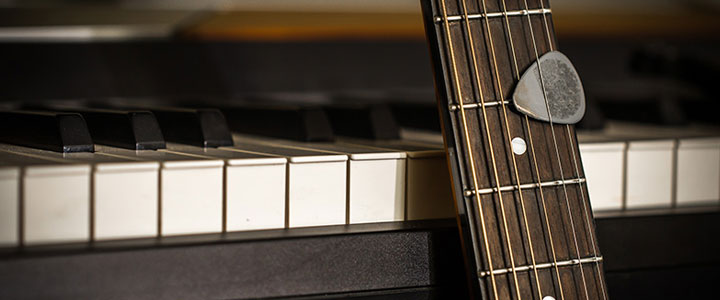Are you looking for jazz piano improvisation ideas? You’ve come to the right place. If you’re new to improvising, knowing a few important basics can open up countless possibilities for you to experiment with. Keep on reading for a few tips to get you started.
Scales
You may not have wanted to hear this, but scales are the key to improvisation. Learn your key signatures and commit those scales to your memory (preferably your muscle memory). You’ll then be able to play around in a specific key during a solo without stumbling onto unwanted accidentals. Take a listen to this clip of Pascal Wintz improvising on the piano, and notice how well he is able to play around with notes in the right key in here.
Inversions
One of my favorite things about jazz piano improvisation is how complex we can make the chords that we play. Jazz is all about exploring ideas outside of the box, and the genre breaks many of the traditional “rules” in other western musical styles. This means we can take a C chord and build it into something much more dissonant, unique, and unstable than what it sounded like originally.
To explore different variations of regular chords, you’ll need to focus on switching up your bass note. D major chords normally have a D in the bass, but you can experiment with putting the third, fifth, or even the seventh in the bass. When you put the third in the bass (in this case an F#), you’ve created a first inversion chord. When you place the fifth in the base, you’ve created a second inversion chord. These chords will take away the sense of stability that you hear when your root is the lowest note and will make your improvisation session much more interesting.
Chords
Another thing I love about jazz chords is stacking additional pitches on top of my preexisting chord. Take a C7 chord, for example. If you want to give yourself more notes to experiment with on the piano, try turning that C7 into something more complex by stacking a ninth (which will be D note) on top. You’ve now created a C9 chord and have a new dissonant element to play around with as you create sound.
Looking for more? Add an F to create a C11 chord. If you want to take it another step further, add a 13th by throwing an A note in. Notice that we simply went up by thirds to create a new chord each time. You can then explore by playing these new chords with the different inversions you learned above. You’ll soon have a completely new sound to add to your jazz piano improvisation practice.
Timing
Experimenting with syncopation can open up a whole new world of possibilities when you’re playing jazz piano. Syncopation is one of the elements that differentiated the blues and jazz genres from other western styles in the first place, so it’s a key skill to learn when you’re an aspiring jazz pianist.
For those that are new to the concept, syncopation simply means playing on the off beat. Essentially, you’re turning the strong beats into the weak beats of the bar, and stressing what are typically the weak beats. In a 4/4 time signature, beats 1 and 3 are typically accented, so a simple example would be to play on beats 1 and 2, and again on beat 4, skipping that third beat. Take a listen to Duke Ellington’s “Syncopated Shuffle” to hear more.
Collaboration
Jazz is all about collaboration. Some of the most innovative jazz music has been born out of an exchange of musical ideas with other musicians. If you’re looking to master the art of jazz piano improvisation, then I’d suggest learning to improvise with other musicians in addition to on your own.
Jazz guitarists are great to practice improvisation with since they’re equally known for their abilities to improvise. If you’re interested in playing jazz guitar yourself, take a look at this article about how to create a great tone.
Using a call-and-response format when you’re improvising in a group is a great way to get started. Start by choosing your key, and alternate by improvising for four bars each. You can then increase the number of bars to eight, and so on. This will teach you to borrow and exchange ideas with your improvisation partner and learn how to come up with a substantial amount of material on the spot.
I hope these tips will get you started on your journey to mastering the art of improvisation. Let us know if you liked it and have fun at the piano!

One reply on “How to Master Jazz Piano Improvisation”
Nice article Natalie Wilson,I really like this article, Keep it up.